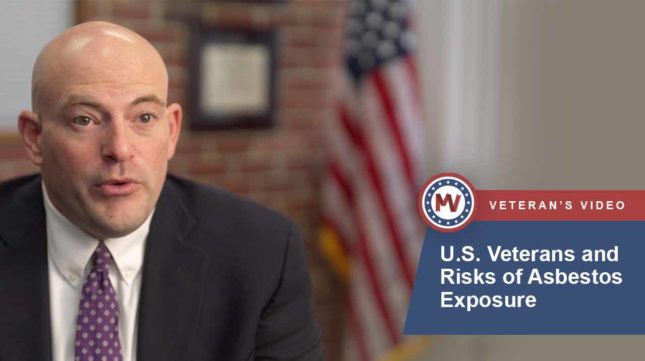
How Does Asbestos Cause Ovarian Cancer?
When products made with asbestos become worn down or damaged, microscopic fibers are released into the air. Those nearby can then inhale or swallow these fibers without realizing it.
In cases of ovarian cancer, asbestos fibers enter the body through the reproductive tract. This may happen when women use asbestos-contaminated hygiene products like talcum powder. Since talc and asbestos are often found alongside one another in nature, talc-based products may contain stray asbestos fibers.
Once inside the body, asbestos fibers can get stuck in healthy tissue and eventually cause cancer after years of inflammation and scarring.
Video Summary: In this video, VA-accredited attorney Eric Hall explains why U.S. veterans are at risk of asbestos-related diseases like mesothelioma. He also breaks down how affected veterans can access military benefits and medical treatment. Call (877) 450-8973 to get started. View Transcript
Veterans who served in the military between the 1930s and the 1980s were likely exposed to asbestos while they were on active duty. Usually, if you've developed an asbestos-related disease, you developed that disease because you had an excessive amount of exposure to asbestos.
If a veteran believes they were exposed to asbestos while serving in the military, we encourage them to call the Mesothelioma Veterans Center so that we can work together to help them file for VA benefits.
The VA will recognize any asbestos-related disease as long as your asbestos exposure happened while you were on active duty in the military.
In addition to VA benefits, the Mesothelioma Veterans Center can connect veterans with world-renowned physicians and nurses on staff that can answer any of your treatment questions. We encourage veterans to call and find out how we can help them.
Both the International Agency for Research on Cancer and the World Health Organization note that asbestos exposure may cause ovarian cancer.
Asbestos exposure was not recognized as a public health crisis until millions of people were already put in danger.
Fortunately, women diagnosed asbestos-related diseases like ovarian cancer or mesothelioma can pursue financial compensation and health care benefits today. Learn about the benefits available with our Free Veterans Packet.






